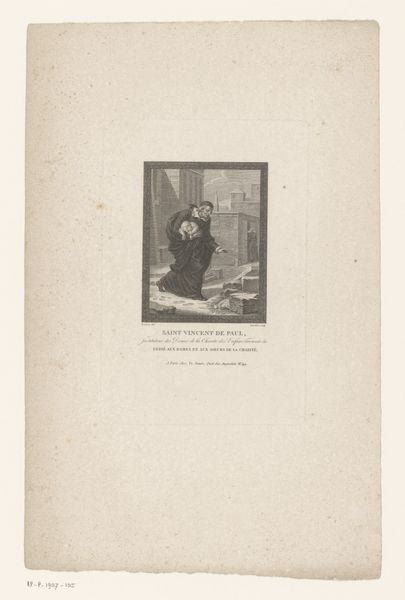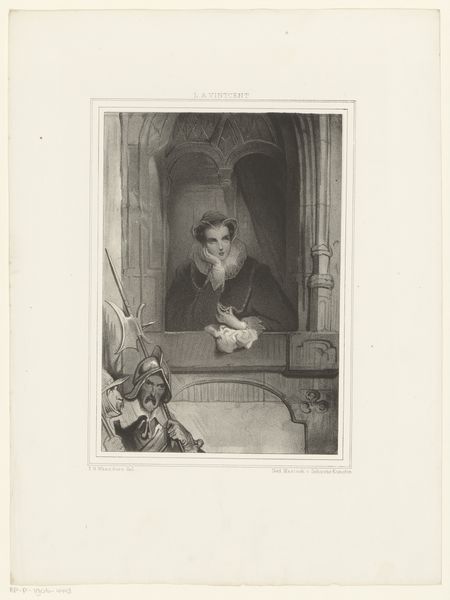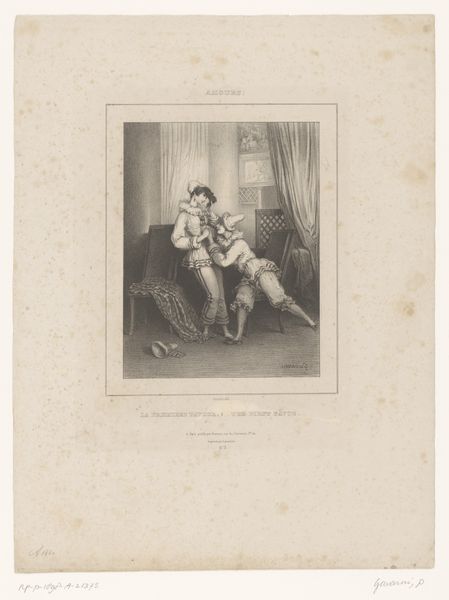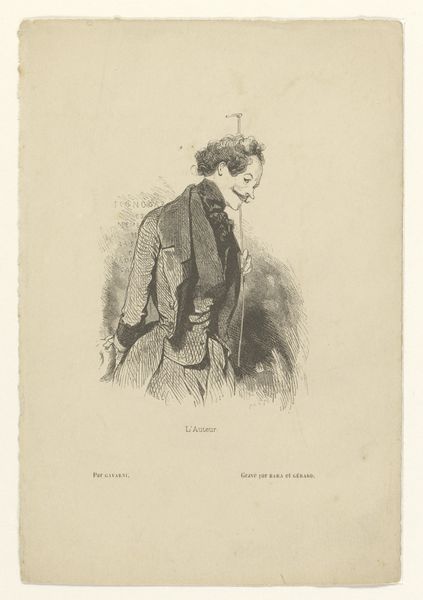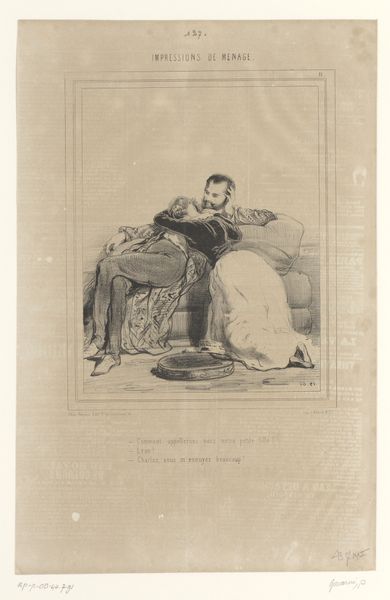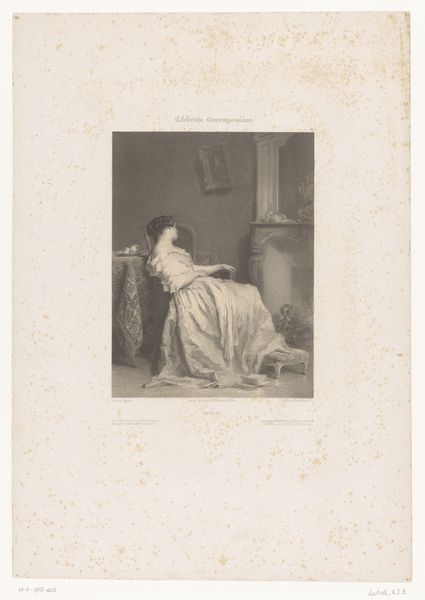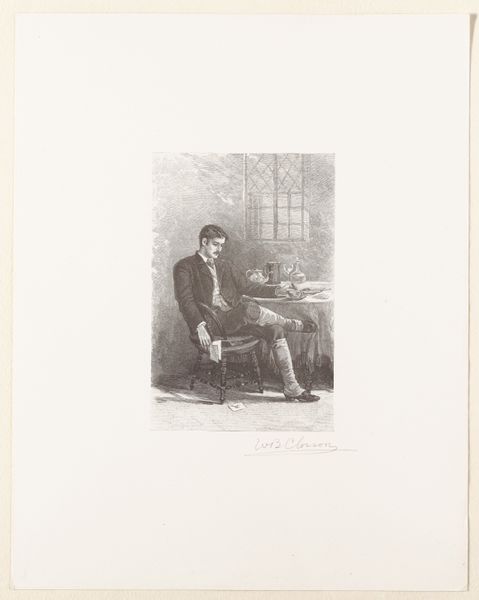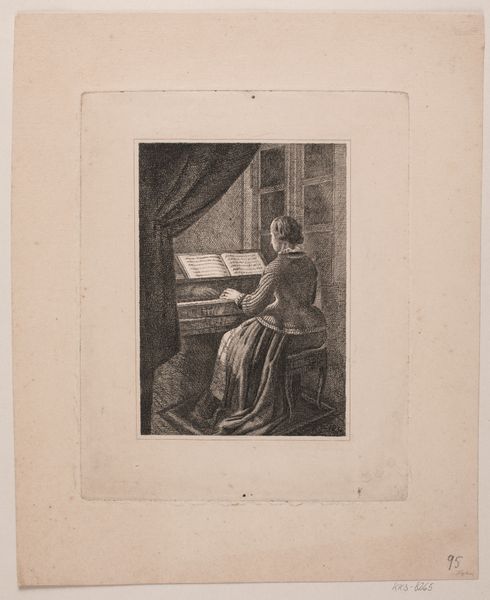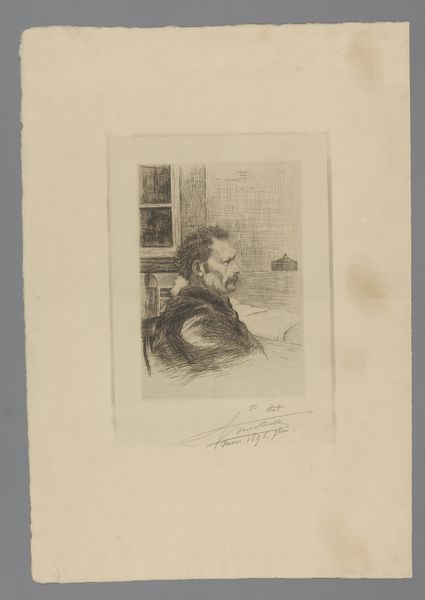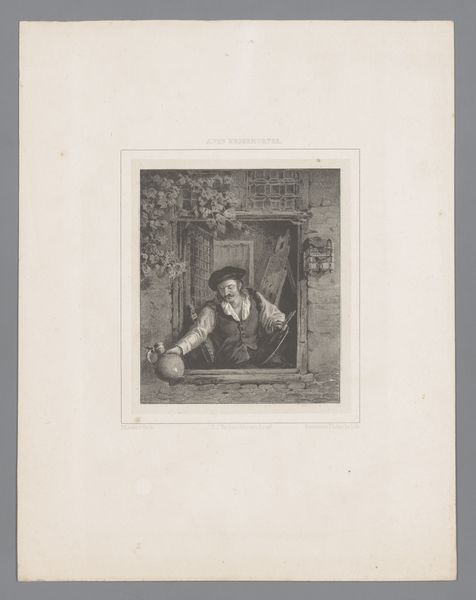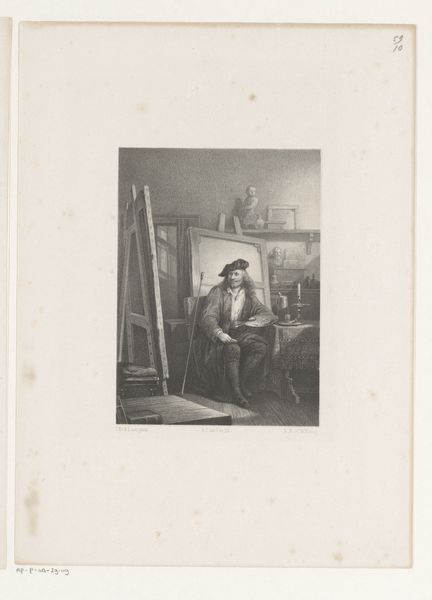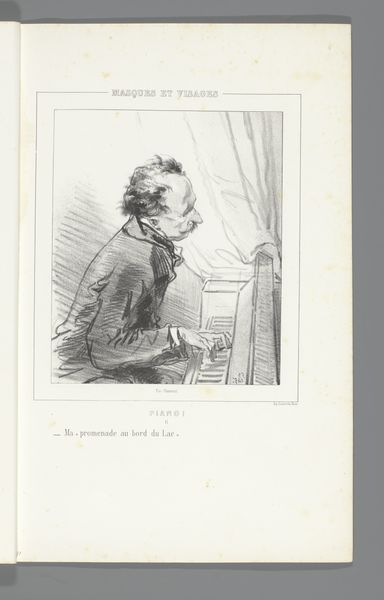
drawing, lithograph, print
#
portrait
#
drawing
#
lithograph
# print
#
caricature
#
figuration
#
romanticism
#
line
#
genre-painting
Dimensions: height 317 mm, width 246 mm
Copyright: Rijks Museum: Open Domain
Curator: Before us we have "Pianist", a lithograph by Paul Gavarni from 1844, currently held at the Rijksmuseum. The print, part of a series, depicts a man at his piano. Editor: There’s a weary sort of humor in this. The pianist is hunched, almost draped over the instrument, the lines of his figure so fluid and slightly exaggerated, and rendered with such a controlled use of tone, they remind one of Daumier. It’s…expressive. Curator: Exactly. Gavarni made his name lampooning Parisian society, capturing their pretensions and affectations for a growing public hungry for such social commentary. Prints like this one circulated widely, influencing perceptions and solidifying class stereotypes. This work reflects the Romantic era’s fascination with both heightened emotion and satirical wit, doesn't it? Editor: Undeniably, yes. Notice how the almost melancholic posture of the figure contrasts so sharply with the almost clownish face. There is something grotesque but still compelling in the contrast between those two qualities. The controlled lithographic lines form a dramatic composition between the figure and his instrument, using very simple lines that are economical, expressive and very efficient at representing textures as well. Curator: Gavarni keenly observed how art, fashion, and even music became markers of identity. This musician could be interpreted as representing either the passionate artist or a performer struggling to maintain appearances in a rapidly changing society. Also, by using the medium of printmaking, this type of artwork became much more affordable and so influenced artistic trends for many other artists during this period, shaping the democratization of art production in Parisian society. Editor: I appreciate that Gavarni eschews photorealism in favor of emphasizing gesture and attitude. He makes us *feel* the drudgery, or perhaps the deep artistic devotion, behind the performance. Curator: Well put. Gavarni’s "Pianist" demonstrates the power of accessible art to capture the pulse of a society, and to dissect its players. Editor: Indeed, the composition’s expressiveness lies as much in its structural choices as it does in any historical context. A piece of social history but also great work of art.
Comments
No comments
Be the first to comment and join the conversation on the ultimate creative platform.
